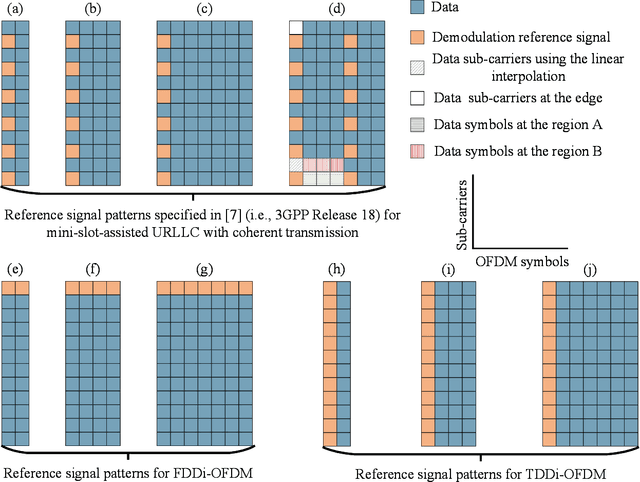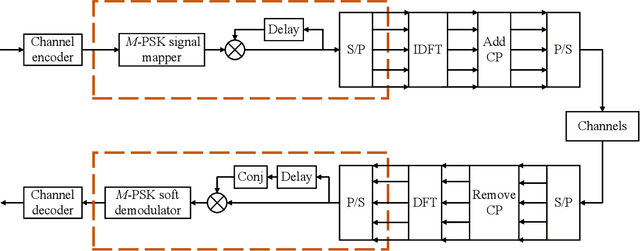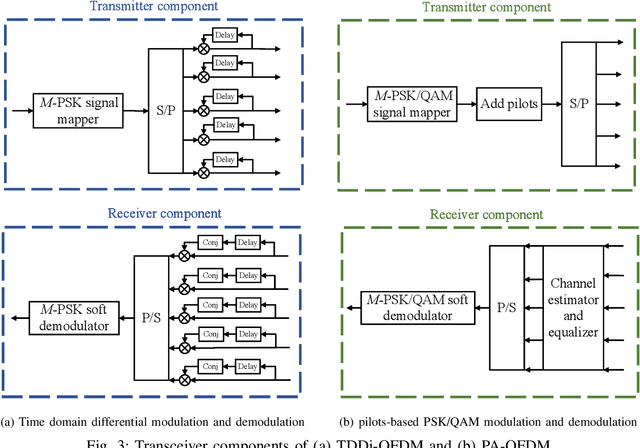Jingjing Luo
Mini-Slot-Assisted Short Packet URLLC:Differential or Coherent Detection?
Aug 26, 2024



Abstract:One of the primary challenges in short packet ultra-reliable and low-latency communications (URLLC) is to achieve reliable channel estimation and data detection while minimizing the impact on latency performance. Given the small packet size in mini-slot-assisted URLLC, relying solely on pilot-based coherent detection is almost impossible to meet the seemingly contradictory requirements of high channel estimation accuracy, high reliability, low training overhead, and low latency. In this paper, we explore differential modulation both in the frequency domain and in the time domain, and propose adopting an adaptive approach that integrates both differential and coherent detection to achieve mini-slot-assisted short packet URLLC, striking a balance among training overhead, system performance, and computational complexity. Specifically, differential (especially in the frequency domain) and coherent detection schemes can be dynamically activated based on application scenarios, channel statistics, information payloads, mini-slot deployment options, and service requirements. Furthermore, we derive the block error rate (BLER) for pilot-based, frequency domain, and time domain differential OFDM using non-asymptotic information-theoretic bounds. Simulation results validate the feasibility and effectiveness of adaptive differential and coherent detection.
SSHNN: Semi-Supervised Hybrid NAS Network for Echocardiographic Image Segmentation
Sep 09, 2023



Abstract:Accurate medical image segmentation especially for echocardiographic images with unmissable noise requires elaborate network design. Compared with manual design, Neural Architecture Search (NAS) realizes better segmentation results due to larger search space and automatic optimization, but most of the existing methods are weak in layer-wise feature aggregation and adopt a ``strong encoder, weak decoder" structure, insufficient to handle global relationships and local details. To resolve these issues, we propose a novel semi-supervised hybrid NAS network for accurate medical image segmentation termed SSHNN. In SSHNN, we creatively use convolution operation in layer-wise feature fusion instead of normalized scalars to avoid losing details, making NAS a stronger encoder. Moreover, Transformers are introduced for the compensation of global context and U-shaped decoder is designed to efficiently connect global context with local features. Specifically, we implement a semi-supervised algorithm Mean-Teacher to overcome the limited volume problem of labeled medical image dataset. Extensive experiments on CAMUS echocardiography dataset demonstrate that SSHNN outperforms state-of-the-art approaches and realizes accurate segmentation. Code will be made publicly available.
 Add to Chrome
Add to Chrome Add to Firefox
Add to Firefox Add to Edge
Add to Edge